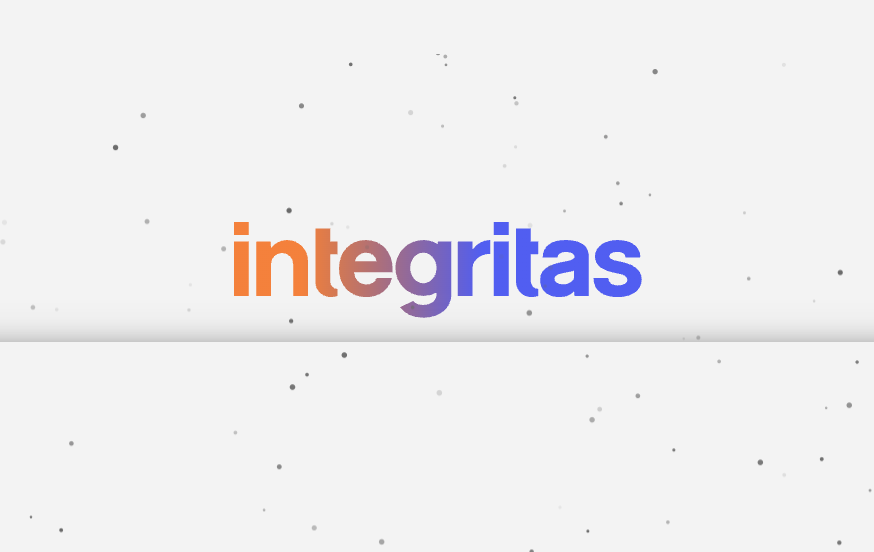
Integritas: A Comprehensive Analysis from Technology to Business Model
1. Core Positioning: An Unshakeable "Anchor of Truth" for the Digital World
In today's world, data is an asset, but how can we trust that this asset is authentic? Whether it's the training data for an AI model, a critical legal document, or environmental readings from an IoT device, its value depends on a fundamental question: "Can I prove this data has been unaltered since its creation?"
Integritas was built to answer this question. It is a decentralized application platform built on the Minima blockchain, with a core mission to transform real-world data from any source into digital truth—immutable, traceable, and verifiable by anyone, at any time.
2. How It Works: A Deep Dive with a Vaccine Cold Chain Use Case
Let's walk through a complete, end-to-end scenario to understand how Integritas operates.
Scenario: A logistics company is transporting a batch of highly temperature-sensitive vaccines. The receiving hospital and regulatory bodies require undeniable proof that the temperature remained within the 2°C to 8°C range throughout the entire journey.
Step 1: Stamping - Anchoring Facts at the Source
The Critical Prerequisite: An Onboard Minima Node The refrigerated truck is equipped with an IoT device that runs a full, yet incredibly lightweight, Minima node. This is the technological cornerstone of "source-level trust" and a core advantage of the Minima protocol, which allows full validating nodes to operate on small-footprint devices like phones, cars, and sensors.
The Process in Action
- The truck's temperature sensor collects a new reading every minute (e.g., {"time": "10:02", "temp": "5.1C"}).
- This data is sent directly to the Minima node running on the same device.
- The node immediately calculates a unique hash (a "digital fingerprint") of the data, a process that can happen locally, even if offline.
- The node then creates a transaction containing this hash and a timestamp, broadcasting it directly to the Minima peer-to-peer network.
Step 2: Verification - Checking the Truth Anytime, Anywhere
The Process in Action Upon the vaccine's arrival, the logistics driver submits the complete temperature log file. The hospital administrator logs into the Integritas web application (referred to as the Integritas Search Engine) and uploads this file.
The Verification Mechanism The Integritas backend services perform multiple hashing calculations on the uploaded file and compare them against the "stamps" recorded on the Minima blockchain:
- It starts with a Full Data Match, hashing the entire file to find an exact record.
- If that fails, it proceeds to Config-Based Packet Size Verification, hashing predefined segments of the file.
- Finally, it performs a Byte-by-Byte Pattern Matching for a more granular, binary-level comparison, seeking to find any verifiable parts within the file.
Step 3: Reporting - Generating Undeniable Proof
The Verification Outcome The system returns a clear result:
- Full Match: The log file is perfect and 100% trustworthy.
- Partial Match: The report clearly indicates which parts of the data are authentic and which are unverifiable (potentially altered or added).
- No Match: The file has no correlation with the on-chain records.
The Final Deliverable Based on the outcome, Integritas generates a detailed validation report, which can be minted as an NFT or downloaded as a PDF. This NFT contains a unique token ID and a link to the Minima blockchain explorer, making the proof publicly auditable and serving as a legally robust, undeniable certificate of integrity.
3. The Business Model: The "Success Flywheel" Connecting Real-World Demand to Token Value
This powerful functionality is supported by an equally elegant business model, creating a value-generating loop called the "Minima Success Framework."
Who Pays? In this use case, the logistics company pays. To meet client requirements, satisfy regulators, and enhance their brand reputation, they subscribe to the Integritas service. This fee is an operational cost and an investment in trust.
How Does the Value Flow? (The 3-Step Flywheel)
- Create Demand (Buy Pressure): The subscription fees paid by the logistics company are used by Integritas to buy $MINIMA tokens from the open market. This means that as platform adoption grows, so does the buying pressure for the $MINIMA token.
- Create Scarcity (Deflation): At the end of each month, any $MINIMA tokens purchased for subscriptions but left unspent are permanently burned. This continuously reduces the total token supply, creating deflation and increasing the token's scarcity value.
- Share Value (Utility & Yield): The $MINIMA tokens that are spent (i.e., used to pay for API calls) are then used to fuel yield for staking/reward products within the Minima ecosystem (like Maximize). This directly links real-world platform usage to returns for token holders.
Who Ultimately Benefits? It’s a multi-sided ecosystem where everyone wins:
- The Client (Hospital, Patients): Gains fundamental safety and trust.
- The Service Provider (Logistics Co.): Wins business and brand reputation.
- $MINIMA Token Holders: Benefit from the value flywheel driven by platform success.
- Affiliates: Earn commissions by referring new subscribers to the platform.
Conclusion
Integritas is more than just a DApp; it is a complete solution. It leverages Minima's unique technology—lightweight nodes deployable on any device—to solve a critical real-world problem of data trust. It then pairs this technology with a robust business model designed to drive demand, create scarcity, and share value. Integritas perfectly demonstrates how blockchain technology can move beyond concepts to provide essential, commercially viable infrastructure for industries everywhere.
Comments